Nutta Homdee
Actionable Interpretation of Machine Learning Models for Sequential Data: Dementia-related Agitation Use Case
Sep 10, 2020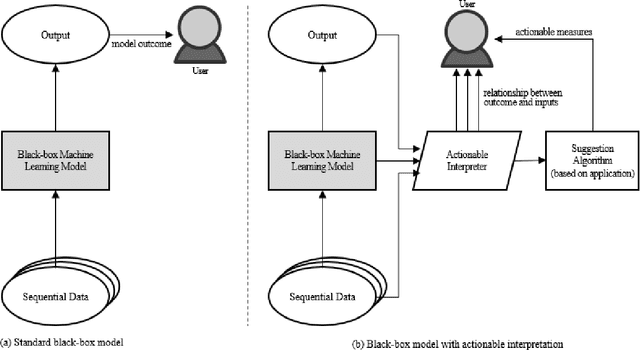
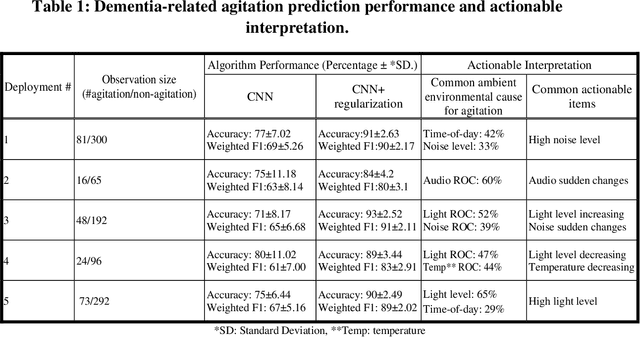
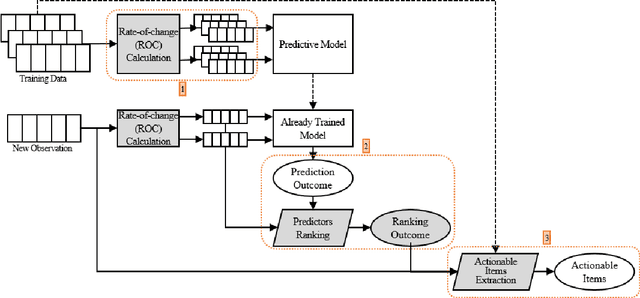
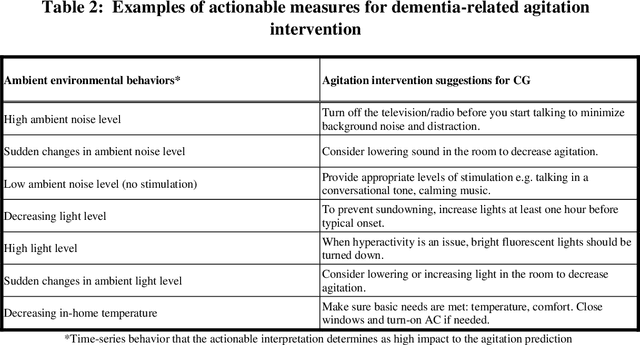
Abstract:Machine learning has shown successes for complex learning problems in which data/parameters can be multidimensional and too complex for a first-principles based analysis. Some applications that utilize machine learning require human interpretability, not just to understand a particular result (classification, detection, etc.) but also for humans to take action based on that result. Black-box machine learning model interpretation has been studied, but recent work has focused on validation and improving model performance. In this work, an actionable interpretation of black-box machine learning models is presented. The proposed technique focuses on the extraction of actionable measures to help users make a decision or take an action. Actionable interpretation can be implemented in most traditional black-box machine learning models. It uses the already trained model, used training data, and data processing techniques to extract actionable items from the model outcome and its time-series inputs. An implementation of the actionable interpretation is shown with a use case: dementia-related agitation prediction and the ambient environment. It is shown that actionable items can be extracted, such as the decreasing of in-home light level, which is triggering an agitation episode. This use case of actionable interpretation can help dementia caregivers take action to intervene and prevent agitation.
Enabling Smartphone-based Estimation of Heart Rate
Dec 18, 2019
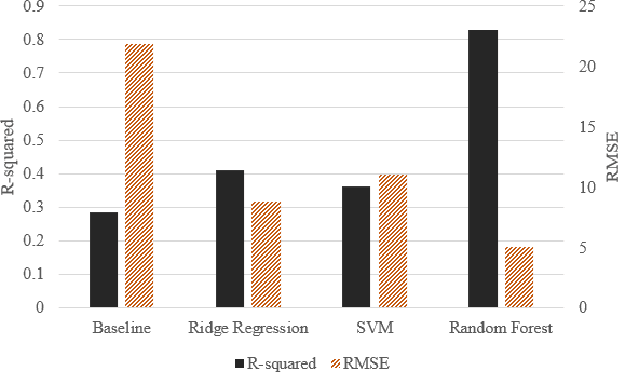
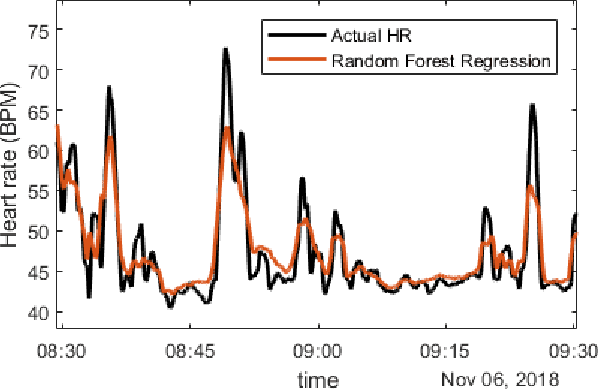
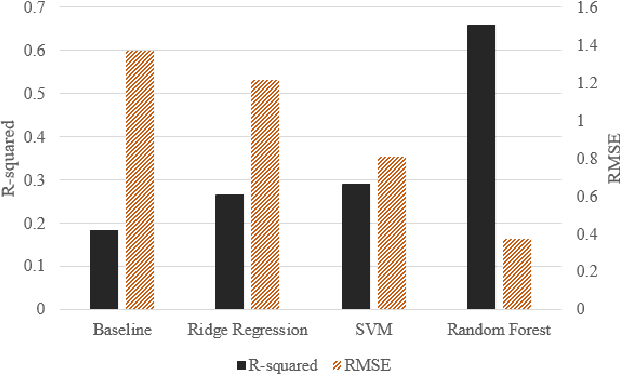
Abstract:Continuous, ubiquitous monitoring through wearable sensors has the potential to collect useful information about users' context. Heart rate is an important physiologic measure used in a wide variety of applications, such as fitness tracking and health monitoring. However, wearable sensors that monitor heart rate, such as smartwatches and electrocardiogram (ECG) patches, can have gaps in their data streams because of technical issues (e.g., bad wireless channels, battery depletion, etc.) or user-related reasons (e.g. motion artifacts, user compliance, etc.). The ability to use other available sensor data (e.g., smartphone data) to estimate missing heart rate readings is useful to cope with any such gaps, thus improving data quality and continuity. In this paper, we test the feasibility of estimating raw heart rate using smartphone sensor data. Using data generated by 12 participants in a one-week study period, we were able to build both personalized and generalized models using regression, SVM, and random forest algorithms. All three algorithms outperformed the baseline moving-average interpolation method for both personalized and generalized settings. Moreover, our findings suggest that personalized models outperformed the generalized models, which speaks to the importance of considering personal physiology, behavior, and life style in the estimation of heart rate. The promising results provide preliminary evidence of the feasibility of combining smartphone sensor data with wearable sensor data for continuous heart rate monitoring.
 Add to Chrome
Add to Chrome Add to Firefox
Add to Firefox Add to Edge
Add to Edge